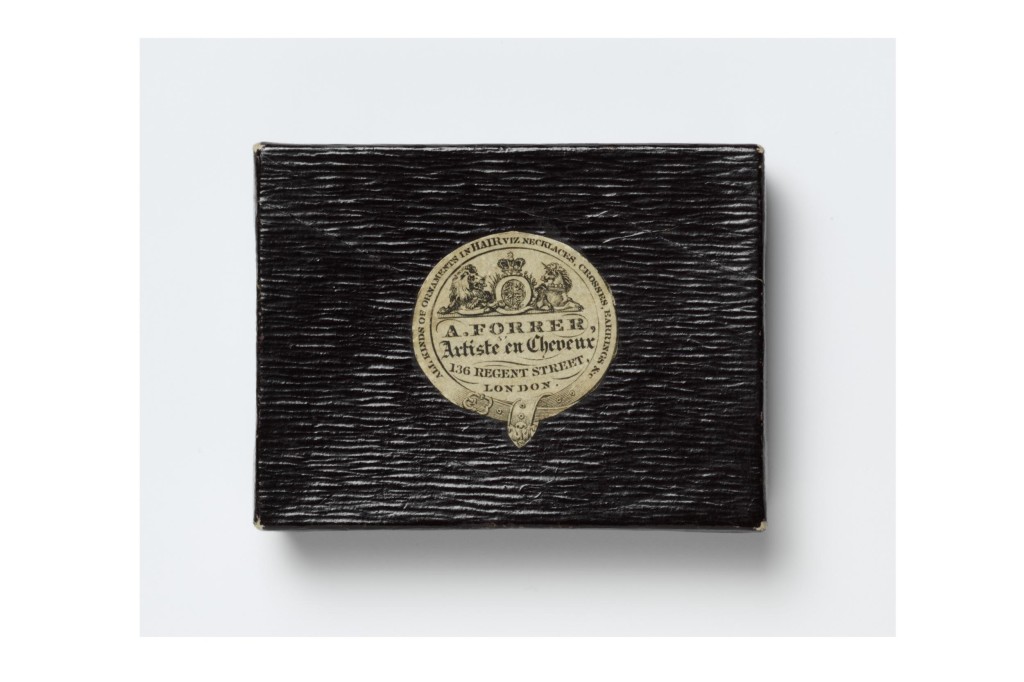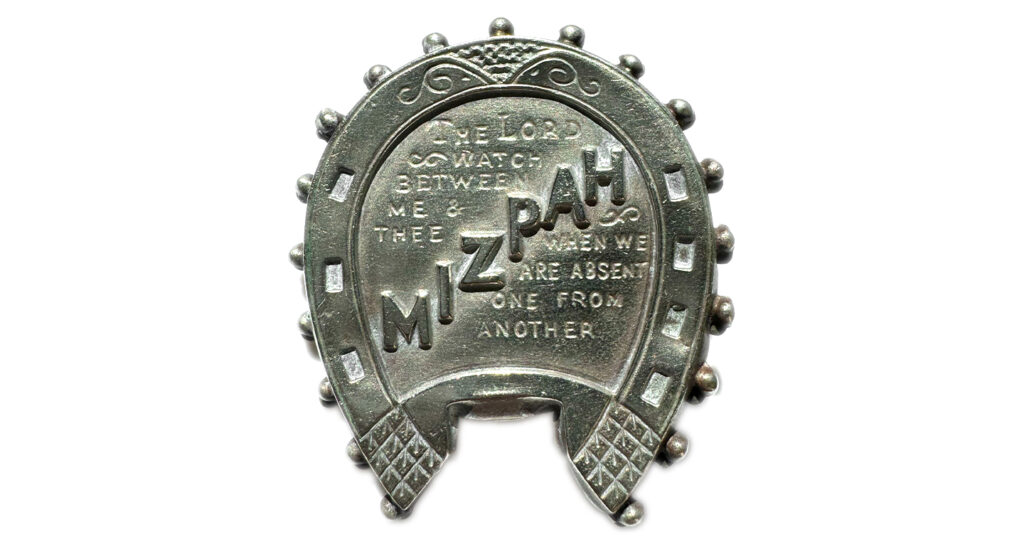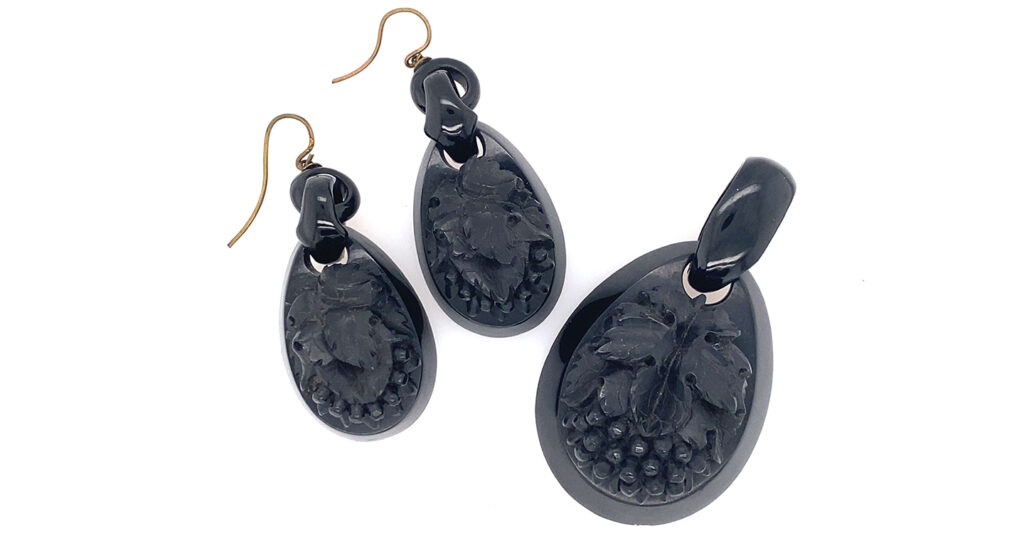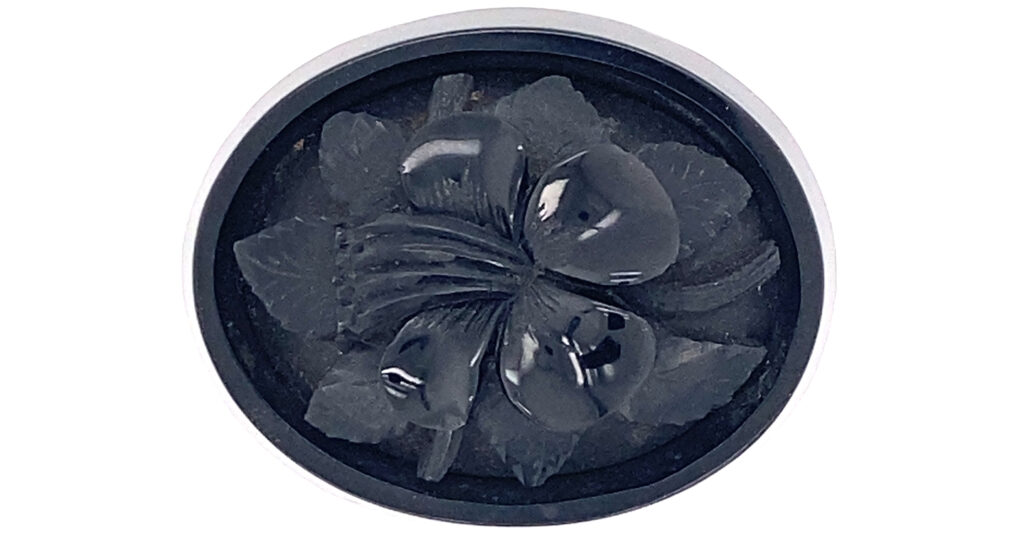A Hair Brooch for Sarah Beth Sparks, 1841

The beauty of mourning jewels is how immediate they are with their emotion. They don’t need to be expensive, elaborate or take years to produce. They are a reaction to an event, and quite often, a last effort to capture the memory of a person before they fade away.
Mourning jewellery is an exceptional primary resource. It doesn’t require conjecture around its existence, nor does it offer much beyond the fact that someone has died and a person felt grief.
Seen in this hairwork brooch for a 16 year old Sarah Beth Sparks, who was born on the 26th of December 1825 and died 1st March 1841. The hair is woven into a bow shape, with its centre bound with gold wire and the ends trimmed with gold tassels. It is a beautiful and simple sentiment.
Interestingly, this token from 1841 retains its original box, which reads:
“A. FORRER, / Artiste en Cheveux / 136 REGENT STREET, / LONDON’ [with Royal crest above, in the centre] and ‘ALL KINDS OF ORNAMENTS IN HAIR VIZ NECKLACES, CROSSES, EARRINGS &c”

Forrer presented hair art at the Great Exhibition, with his biography in the Official Catalogue of the Great Exhibition of the Works of Industry of All Nations being:
“FORRER. A. 136 Regent St. Prop. – Ornaments worked in hair and gold. Jewellery; ornamental frame, containing the miniatures of Her Majesty H. R. H Prince Albert, and the Royal Family, mounted in hair and gold.”
Forrer would have been well established in the industry by 1851, the time of the Great Exhibition. This modest brooch is from ten years before the Exhibition, offering an insight into the popularity and sustainability of hair weaving as its own industry.
The hairworking industry in England was the main focus of the memorial industry and accordingly, there were many professionals who practiced the art.
“Hair jewellery, Artist in Hair. Dewdney begs to inform Ladies or Gentlemen that he beautifully makes, and elegantly mounts in gold, Hair Bracelets, Chains, Brooches, Rings, Pins, Studs, etc. and forwards the same, at about one-half the usual charge. A beautiful collection of specimens handsomely mounted kept for inspection. An illustrated book sent free. Dewdney, 172 Fenchurch St. London.” (Advertisement, Illustrated London News, May 1862)
There was much competition within the English industry in the 19th century. Advertisements, such as the one above, are examples of the extent to which hairworkers would go to in order to gain business. Alfred Shuff, of 34 Great Marlborough Street, Fosser of Hanover Street, Cleal of Poland Street and Bakewell of Red Lion Street, were all well known hairworkers and presented their hair at exhibitions. Alfred Shuff was noted for his hairwork in the mid 19th Century. However, it was B.Lee of 41 Rathbone Place who exhibited his work at the Great Exhibition of 1851.
It was a lucrative and competitive business. Weaving hair ranged from being something that could be done in the home, right to the levels of expanse that catered for an entire industry. Forrer’s brooch may be a simple object, but it tells a larger tale.






